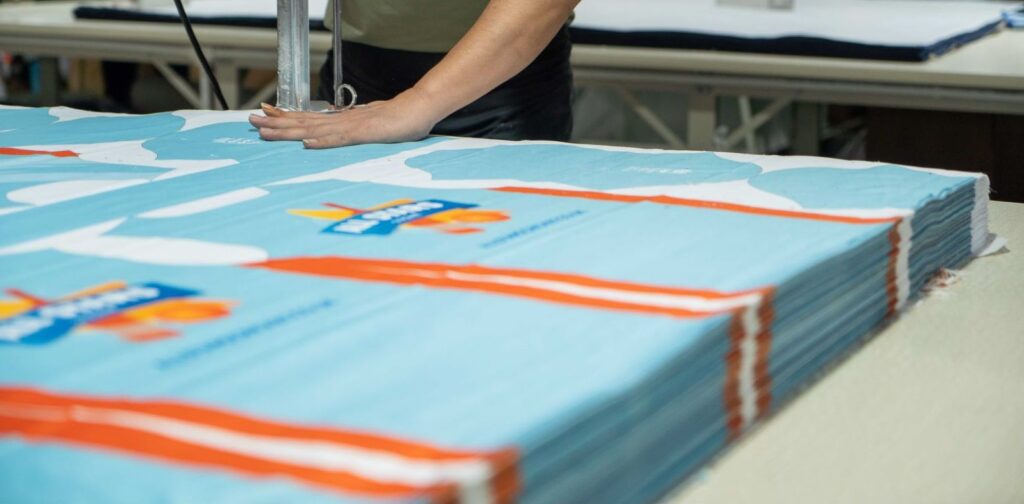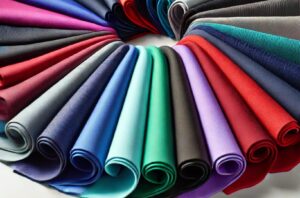Understanding What is GSM in Fabric
Grams per square meter (GSM) is a standard metric used in the textile industry to measure the weight of fabric. It’s an important factor to consider when designing sportswear because it can affect the garment’s breathability, durability, and insulation.
In this blog post, we will discuss the importance of GSM in sportswear, the factors that affect GSM, how to choose the right GSM for your needs, and the benefits of working with a fabric expert.
How GSM Affects the Performance of Sportswear
GSM can have a diverse range of effects on the fabric’s properties, including:
1. Durability
A higher GSM fabric is generally more durable than a lower GSM fabric. This is because the higher GSM fabric has more material to resist wear and tear. For example, rugby jerseys typically have a higher GSM (around 220) than soccer jerseys (around 150) because they need to be more durable to withstand the rigors of the sport.
2. Breathability
A lower GSM fabric is generally more breathable than a higher GSM fabric. This is because the lower GSM fabric has more open space for air to circulate. For example, sports apparel designed for high-intensity activities, such as running and basketball, often uses lower GSM fabrics to help keep athletes cool and comfortable.
3. Moisture-wicking
Lower GSM fabrics are generally better at wicking moisture than higher GSM fabrics because they have more open space for moisture to evaporate. This is why many sports apparel brands use lower GSM fabrics for their products, as they help to keep athletes cool and comfortable during high-intensity activities.
4. Print quality
GSM can significantly influence the quality of printed designs, particularly for sublimation fabrics. The higher the GSM of the fabric, the better the ink will adhere to the fabric, resulting in a sharper and more vibrant image. However, it is important to note that too high of a GSM can also make it difficult for the ink to penetrate the fabric, resulting in a blurry or faded image.
5. Tactile feel
Tactile feel is not just about how a fabric feels on the skin, but also how it moves with the body. Lower GSM fabrics are often better at wicking moisture away from the body, which can help keep athletes cool and comfortable during physical activity. They can also be more comfortable to wear in hot weather because they allow more air to circulate.
It is important to consider all of these factors when choosing the right GSM for a specific garment for activewear. The desired properties of the garment, such as durability, breathability, and print quality, will all play a role in the decision.
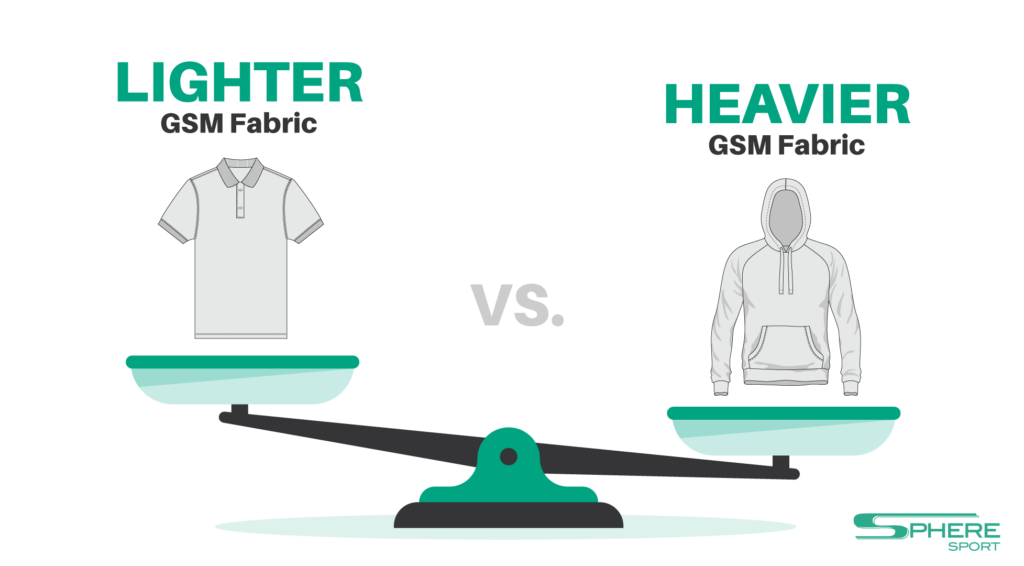
What is GSM for Fabric: Lighter vs. Heavier GSM
Understanding the relationship between GSM and fabric performance enables teamwear and sportswear brands to choose fabrics that optimize athletes’ comfort, functionality, and overall performance.
| Apparel Type | Lighter GSM | Heavier GSM |
| Running Shirt/Shorts | 100-120gsm | 160-180gsm |
| Polo | 120-140gsm | 180-200gsm |
| Hoodie | 280gsm | 320-340gsm |
Pros of lighter GSM fabrics
- Breathability: Lower GSM fabrics create lightweight garments that are ideal for sports prioritizing agility, flexibility, and breathability. Fabrics like polyester blends allow for increased freedom of movement and prevent athletes from feeling weighed down.
- Moisture-wicking properties: Fabrics with lower GSM have moisture-wicking properties that efficiently draw sweat away from the body and promote quick evaporation, keeping athletes dry and comfortable during intense physical activities.
Pros of heavier GSM fabrics
- Insulation and warmth: Higher GSM fabrics impact insulation properties and provide enhanced warmth and protection, making them suitable for sports played in colder climates or during winter seasons. It offers better heat retention and helps athletes stay comfortable in chilly conditions.
- Durability and longevity: Fabrics with higher GSM exhibit greater durability and resistance to wear and tear, making them ideal for sports involving contact or rough play. They ensure that the garments withstand rigorous use and maintain their performance over time.
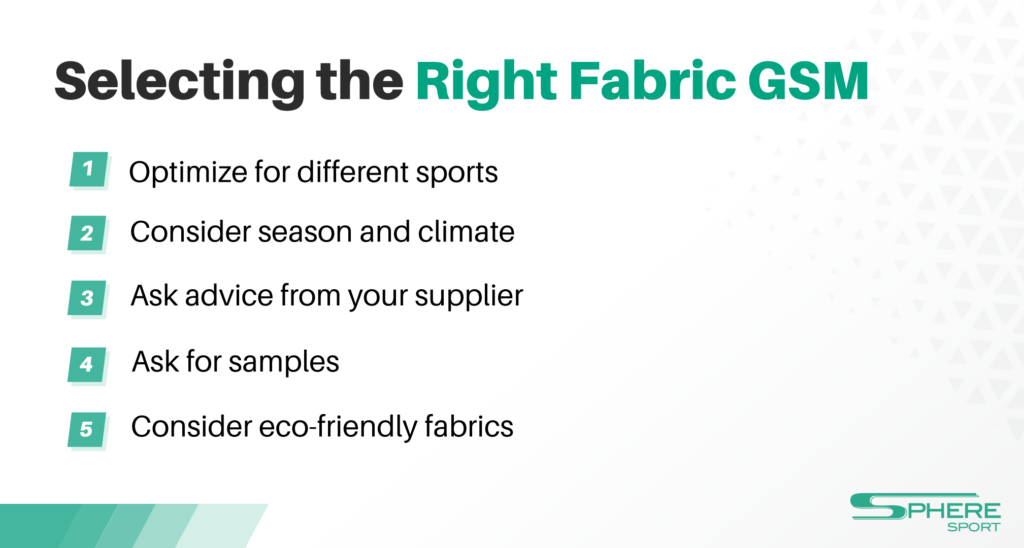
5 Tips for Choosing the Right GSM for Your Sportswear
When choosing the right GSM for sportswear, consider these tips:
1. Assess the Sport’s Physical Demands
The physical intensity of the sport in question can guide your GSM choice. High-contact sports like rugby or football may require higher GSM for durability. In contrast, endurance sports like running or cycling may benefit from lower GSM fabrics for breathability and moisture-wicking.
2. Consider the Season
Is the garment meant for summer or winter use? For hot and humid conditions, a lighter GSM will offer better ventilation. For colder climates, a heavier GSM will provide the required insulation.
3. Consult with Fabric Experts or Manufacturers
Don’t hesitate to consult fabric suppliers or experts in the field. Their insights can help you understand how different GSM ranges behave over time and how they meet specific performance criteria. Engage in open discussions, sharing your sportswear requirements.
4. Conduct Wear Tests
Obtain samples from potential suppliers and subject them to thorough testing. Nothing beats real-world testing. Consider creating prototype garments with varying GSM levels and have athletes wear them during practice sessions. Gather feedback on aspects like comfort, durability, and performance to make a final decision.
5. Think About Sustainability
Eco-conscious brands may also want to consider the environmental impact of their fabric choices. Fabrics like REPREVE offer an eco-friendly yet high-performance alternative. Available in various GSM options, REPREVE allows you to balance both environmental impact and athletic needs, making it a win-win choice for conscious brands.
To gain a deeper understanding of the different fabric types and their GSM, take a look at our comprehensive fabric guide tailored for sports apparel.

Common GSM in Fabric By Sport & Apparel
Activewear
| Shirts | Singlets | Shorts | Sweatpants | Polos |
| 120gsm, 140gsm, 160gsm | 100gsm, 120gsm, 140gsm | 120gsm, 140gsm, 160gsm, 220gsm | 160gsm, 180gsm, 200gsm, 220gsm | 160gsm, 180gsm, 200gsm, 220gsm |
Baseball
| Button-Up Jersey | No-Button Jersey | Pants |
| 160gsm | 200gsm | 250gsm |
Basketball
Rugby
Soccer
| Jersey | Shorts |
| 120gsm,140gsm, 150gsm, 160gsm | 150gsm, 160gsm, 220gsm |
Swimming
| Swimsuit | Rashies Vest |
| 250gsm | 230gsm, 250gsm |
Tennis
| Shirt | Skirts |
| 120gsm, 140gsm, 160gsm | 160gsm |
Winter Wear
| Tracksuit | Softshell Jacket | Puffer Vest | Sub Hoodie | Fleece Hoodie |
| 130gsm, 180gsm, 220gsm, 250gsm | 320gsm | 180gsm | 340gsm | 330gsm, 340gsm |
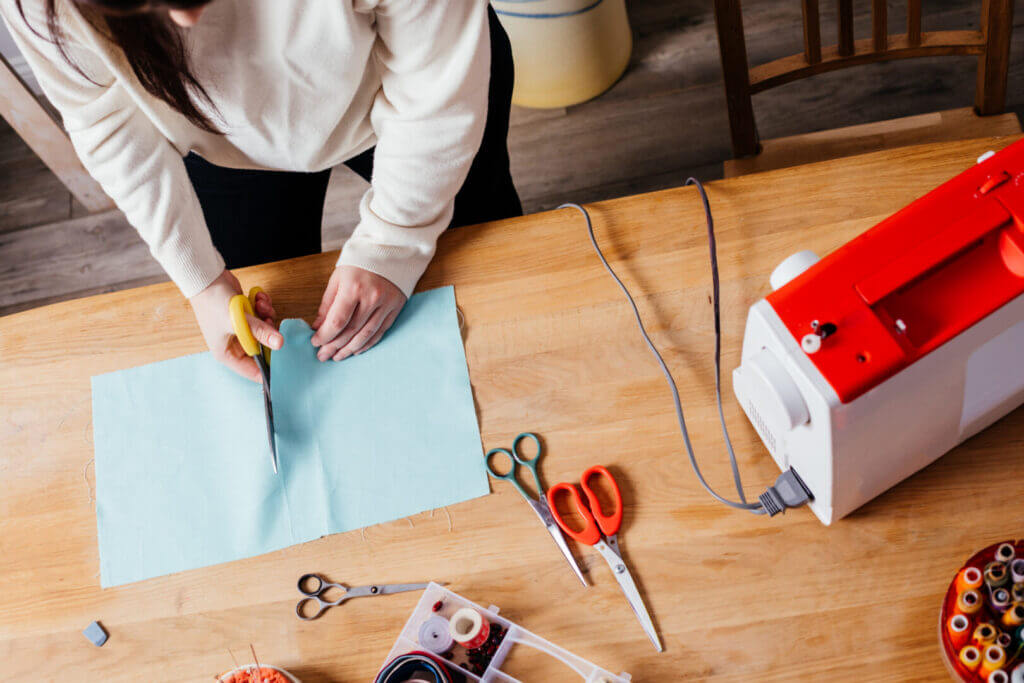
How to Calculate GSM in 3 Easy Steps
Grams per square meter (GSM) can easily be measured with tools you likely have around the house or office. Since GSM is based on a square area, any evenly cut fabric sample will work as long as you convert it into square meters. This method is especially useful when comparing fabrics from different suppliers, matching new fabric to an existing one, or ensuring a garment has the same thickness and feel as another piece you like.
Follow these three simple steps to determine the GSM of any fabric:
Step 1: Cut a Square Sample and Use Metric Measurements
To get an accurate GSM reading, measure in centimeters (cm) and grams (g). If you only have an imperial ruler, use the following conversions:
- 1 inch = 2.54 cm
- 1 yard = 0.914 meters
Use scissors or a rotary cutter to cut a fabric square with equal sides. A common size is 10 cm × 10 cm because it simplifies the calculation. If you’re not able to get a perfect square, the calculation will still work.
Step 2: Weigh the Fabric Sample
Place the fabric square on a digital scale that measures in grams. A kitchen scale or food scale works well for this step. Record the weight of the sample in grams.
Step 3: Calculate the GSM
Now, apply the following formula:
GSM = (100 × 100) ÷ (Material Square Length × Material Square Width) × Material Square Weight
For a 10 cm × 10 cm fabric sample:
GSM = Sample Weight (grams) × 100
Example Calculation:
- Sample size: 10 cm × 10 cm
- Sample weight: 15 grams
- GSM = 15 × 100 = 150 GSM
If your fabric square is a different size, simply adjust the formula by dividing 100 cm × 100 cm by the actual square dimensions before multiplying by the weight.
By following this method, you can easily measure GSM at home and make informed fabric choices for your sportswear or apparel needs.
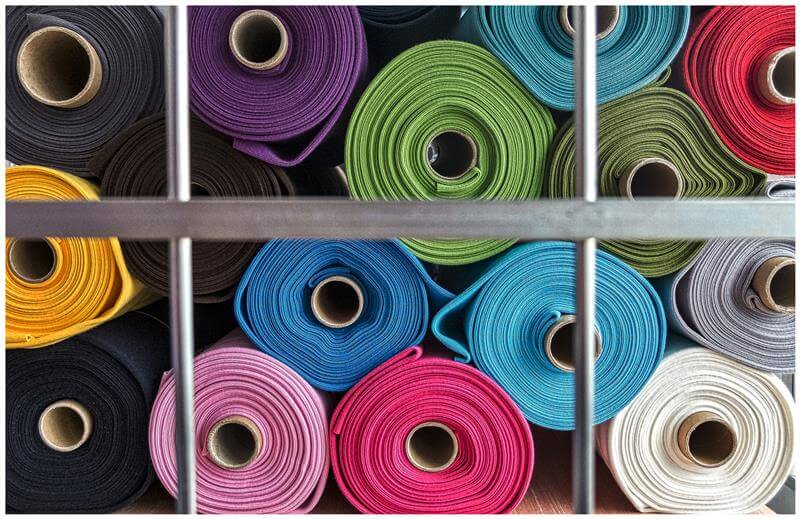
Fabrics Sold by Yardage vs. Weight
Understanding GSM is useful when selecting fabrics, especially since some fabrics are sold by yardage while others are sold by weight.
Fabrics Sold by Yardage
Most fabrics for clothing are sold by the yard (or meter in some countries). These are usually woven or knit textiles that are cut from large rolls. Examples include:
- Cotton (woven or knit) – used for shirts, dresses, and T-shirts
- Linen – for breathable summer clothing
- Silk – for luxury garments and dresses
- Denim – for jeans and jackets
- Wool Suiting – used for tailored suits
- Synthetic Fabrics (polyester, rayon, etc.) – for activewear, dresses, and blouses
Fabrics Sold by Weight
Some materials are sold by weight, especially those that are made in irregular shapes or are often used in bulk. These include:
- Leather & Suede – measured in ounces per square foot because thickness matters more than length
- Fleece & Wool Felts – can be sold by weight, especially when used for insulation or crafting
- Some Knits & Jerseys – higher-end jersey fabrics (used for T-shirts and leggings) are sometimes listed by grams per square meter (GSM)
- Raw or Unprocessed Fabrics (like raw silk or wool roving) – often sold by weight instead of length
Partner With Sphere Sport
GSM is an important factor to consider when designing sportswear. By choosing the right GSM, you can create garments that are comfortable, durable, and functional for the specific needs of your teamwear brand. At Sphere Sport, we are dedicated to delivering fabric quality and customization options that meet your needs.
If you are interested in learning more about what is GSM in fabric and how to choose the right one for your sportswear brand, you can email us at hello@sphere-sports.com. We have a team of experts who can help you with that.
Contact us today to learn more about B2B sportswear manufacturing services.

